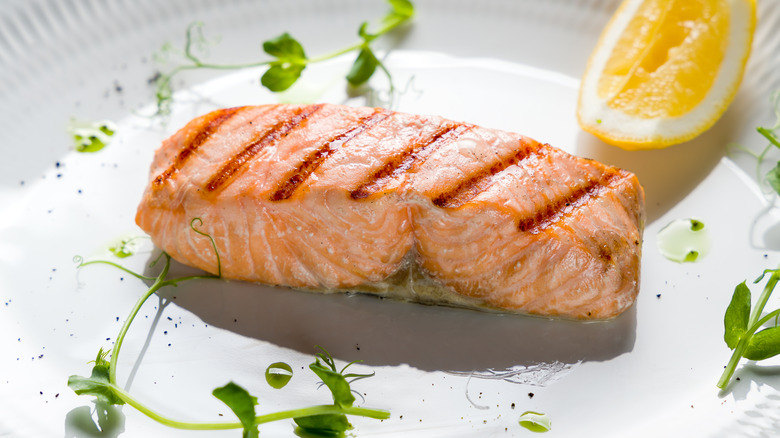What To Do With Overcooked Salmon Instead Of Throwing It Out
There is a thin line between a moist, supple fillet of salmon your fork slides right through, to a dry, firm, and tacky forkful that gets stuck in your teeth. Fish is finicky, and this transition can happen within mere minutes. Cooking fish takes practice to perfect and is arguably one of the toughest culinary feats. Ideally, a thermometer will be the best gauge of when your salmon is done, but elements such as carry-over cooking and the cooking method make this line a bit blurry.
All is not lost though if you overcook salmon, and there is certainly no reason to send it to the trash bin. You may not want to eat it on its own due to the tougher texture and slight loss of flavor, but there are myriad ways to still enjoy this fish. To turn that fillet from rubbery to replenished, all you need to do is add back what was lost in the heating process — moisture.
Liquid is your friend
Overcooked salmon on its own is perfectly safe and edible (in fact, it's much safer than undercooked salmon), but the texture may leave one wanting ... a glass of water. In addition to the chalky mouthfeel, oftentimes overcooked salmon will also develop bits of opaque white goop on top. This is just protein, or coagulated albumin, and is completely safe to eat (or scrape off with a fork), but is it appetizing? Not so much.
The best way to repurpose overcooked salmon is to make it an addition to other juicy ingredients instead of the star of the show. Think adding a sauce or broth: swap salmon in that tuna salad with some mayo and Dijon, make it a creamy pasta protein addition, flake it into a seafood chowder or curry, or run it in the food processor and form it into patties to sear and serve with a generous dollop of avocado cream.
Whichever route you choose, you'll quickly realize that with the right preparation, you can easily overcome the less-than-desirable traits of overcooked salmon and create a delicious dish you'd never consider throwing away.

